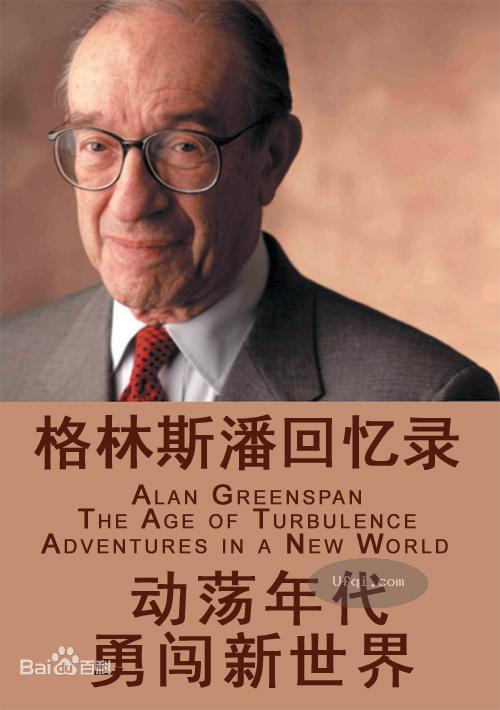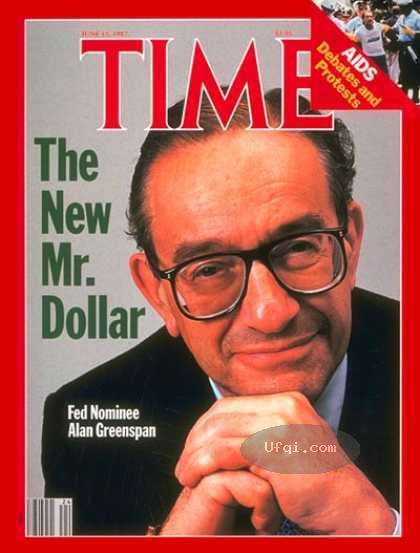


2023-04-27 , 8615 , 104 , 176
美联储主席格林斯潘回忆录——动荡年代:勇闯新世界-the age of turbulence-4
For the most part, the electronic flows of funds were doing fine. But
with civilian air traffic shut down, the transportation and clearing of good
old-fashioned checks were being delayed. That was a technical problem—a
4
substantial one, but one that the staff and the individual Federal Reserve
banks were entirely capable of handling by temporarily extending additional
credit to commercial banks.
I spent most of my time in the days that followed watching and listening
for signs of a catastrophic economic slowdown. For seven months before
9/11, the economy had been in a very minor recession, still shaking off
the effects of the dot-com crash of 2000. But things had started to turn
around. We had rapidly been lowering interest rates, and the markets were
beginning to stabilize. By late August public interest had shifted from the
economy to Gary Condit, the California congressman whose less-thanforthcoming
statements about a missing young woman dominated the
nightly news. Andrea couldn't get on the air with anything of global significance,
and I remember thinking how incredible that seemed—the world
must be in pretty good shape if the TV news focused mainly on domestic
scandal. Within the Fed, the biggest issue we faced was how far to lower interest
rates.
After 9/11, the reports and statistics streaming in from the Federal Reserve
banks told a very different story. The Federal Reserve System consists
of twelve banks strategically situated around the country Each one lends
money to and regulates the banks in its region. The Federal Reserve banks
also serve as a window on the American economy—officers and staff stay
constantly in touch with bankers and businesspeople in their districts, and
the information they glean about orders and sales beats official published
data by as much as a month.
What they were telling us now was that all across the country people
had stopped spending on everything except items bought in preparation
for possible additional attacks: sales of groceries, security devices, bottled
water, and insurance were up; the whole travel, entertainment, hotel, tourism,
and convention business was down. We knew the shipping of fresh
vegetables from the West Coast to the East Coast would be disrupted by
the suspension of air freight, but we were somewhat surprised by how
quickly many other businesses were hit. For example, the flow of auto parts
from Windsor, Ontario, to Detroit's plants slowed to a crawl at the river
crossings that join the two cities—a factor in the decision by Ford Motor to
shut down temporarily five of its factories. Years earlier, many manufacturers had shifted to "just-in-time" production—instead of stockpiling parts
and supplies at the plant, they relied on air freight to deliver critical components
as they were needed. The shutdown of the airspace and the tightening
of borders led to shortages, bottlenecks, and canceled shifts.
In the meantime, the U.S. government had gone into high gear. On Friday,
September 14, Congress passed an initial emergency appropriation of
$40 billion and authorized the president to use force against the "nations,
organizations, or persons" who had attacked us. President Bush rallied the



nation with what will likely go down as the most effective speech of his
presidency. "America was targeted for attack because we're the brightest
beacon for freedom and opportunity in the world," he said. "And no one
will keep that light from shining." His approval ratings soared to 86 percent,
and politics, if only for a short period, became bipartisan. Lots of ideas
were being floated on Capitol Hill for helping the nation bounce back.
There were plans that involved pumping funds into airlines, tourism, and
recreation. There was a raft of proposals to extend tax breaks to businesses
in order to encourage capital investment. Terrorism insurance was much
discussed—how do you insure against such catastrophic events, and what
role, if any, does the government have in that?
I thought it urgent to get commercial aircraft flying again, in order to
abort all the negative ripple effects. (Congress quickly passed a $15 billion
air transport rescue bill.) But beyond that, I paid less attention to most of
these debates, because I was intent on getting the larger picture—which
still wasn't clear to me. I was convinced that the answer would not lie in
big, hasty, expensive gestures. It's typical that in times of great national urgency,
every congressman feels he has to put out a bill; presidents feel the
pressure to act too. Under those conditions you can get shortsighted, ineffective,
often counterproductive policies, like the gasoline rationing that
President Nixon imposed during the first OPEC oil shock in 1973. (That
policy caused gas lines in some parts of the country that fall.) But with
fourteen years under my belt as Fed chairman, I'd seen the economy pull
through a lot of crises—including the largest one-day crash in the history of
the stock market, which happened five weeks after I took the job. We'd
survived the real-estate boom and bust of the 1980s, the savings and loan
crisis, and the Asian financial upheavals, not to mention the recession of
6
1990. We'd enjoyed the longest stock-market boom in history and then
weathered the ensuing dot-com crash. I was gradually coming to believe
that the U.S. economy's greatest strength was its resiliency—its ability to
absorb disruptions and recover, often in ways and at a pace you'd never be
able to predict, much less dictate. Yet in this terrible circumstance, there
was no way to know what would happen.
I thought the best strategy was to observe and wait until we understood
better what the precise fallout from 9/11 would be. That is what
I told the congressional leadership in a meeting in the House Speaker's
office on the afternoon of September 19. Speaker Dennis Hastert, House
minority leader Dick Gephardt, Senate majority leader Trent Lott, and
Senate minority leader Tom Daschle, along with Bob Rubin, the former
secretary of the treasury under President Clinton, and White House economic
adviser Larry Lindsey, all met in a plain conference room attached
to Hastert's office on the House side of the Capitol. The legislators wanted
to hear assessments of the economic impact of the attacks from Lindsey,
Rubin, and me. There was great seriousness to the ensuing discussion—no
grandstanding. (I remember thinking, This is the way government should work.)
Lindsey put forward the idea that as the terrorists had dealt a blow to
American confidence, the best way to counter it would be a tax cut. He and
others argued for pumping about $100 billion into the economy as soon as



UfqiLong
possible. The number didn't alarm me—it was about 1 percent of the country's
total annual output. But I told them we had no way of knowing yet
whether $100 billion was too much or too little. Yes, the airlines and the
tourism industries had been severely impacted, and the newspapers were
full of stories about all sorts of layoffs. Yet on Monday, September 17, amazingly,
the New York Stock Exchange had succeeded in reopening just three
blocks from Ground Zero. It was an important step because it brought a
sense of normalcy back to the system—a bright spot in the picture we were
still piecing together at the Fed. At the same time, the check payment system
was recovering, and the stock market hadn't crashed: prices had merely
gone down and then stabilized, an indication that most companies were
not in serious trouble. I told them the prudent course was to continue to
work on options and meet back in two weeks, when we'd know more.
7
I delivered the same message the next morning to a public hearing of the
Senate Banking Committee, counseling patience: "Nobody has the capacity
to fathom fully how the tragedy of September 11 will play out. But in the
weeks ahead, as the shock wears off, we should be able to better gauge how
the ongoing dynamics of these events are shaping the immediate economic
outlook." I also emphasized, "Over the past couple of decades, the American
economy has become increasingly resilient to shocks. Deregulated financial
markets, far more flexible labor markets, and, more recently, the
major advances in information technology have enhanced our ability to absorb
disruptions and recover."
In fact, I was putting a better face on the situation than I feared might
be the case. Like most people in government, I fully expected more attacks.
That feeling went mainly unspoken in public, but you could see it in the
unanimity of the Senate votes: 98-0 for authorizing the use of force against
terrorists, 100-0 for the aviation security bill. I was particularly concerned
about a weapon of mass destruction, possibly a nuclear device stolen from
the Soviet arsenal during the chaos of the collapse of the USSR. I also contemplated
the contamination of our reservoirs. Yet on the record I took a
less pessimistic stance because if I had fully expressed what I thought the
probabilities were, I'd have scared the markets half to death. I realized I
probably wasn't fooling anybody, though: people in the markets would
hear me and say, "I sure hope he's right."
In late September, the first hard data came in. Typically, the earliest
clear indicator of what's happening to the economy is the number of new
claims for unemployment benefits, a statistic compiled each week by the
Department of Labor. For the third week of the month, claims topped
450,000, about 13 percent above their level in late August. The figure confirmed
the extent and seriousness of the hardships we'd been seeing in
news reports about people who'd lost their jobs. I could imagine those
thousands of hotel and resort workers and others now in limbo, not knowing
how they would support themselves and their families. I was coming to
the view that the economy was not going to bounce back quickly. The
shock was severe enough that even a highly flexible economy would have
difficulty dealing with it.
(未完待续, To be contd)



🔗 连载目录
🤖 智能推荐




